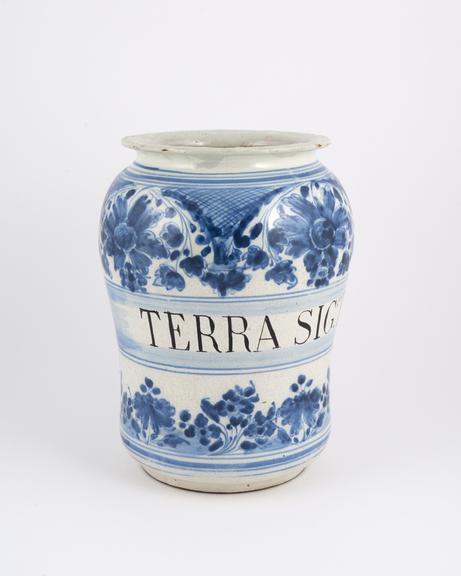





Albarello, Portuguese(?), 18th century, blue and white maiolica, used for terra sigillata rossa
The vase was used to store “TERRA SIGILLA ROSSA”. This refers to terra sigillata, a clay believed to have medicinal qualities, first used on the Greek island of Lemnos. The clay was crushed into a powder and taken with liquids or made into a paste and applied to the body. Terra sigillata was believed to fight against a number of diseases including plague and was highly sought after during epidemics. An increased demand needed an increased supply and sources were found elsewhere in Europe. Albarello vases originated in Persia. The characteristic hourglass shape was invented so that lots of jars could be put on one shelf, but each one could still be safely removed by grasping it around the middle.
Details
- Category:
- Medical Ceramic-ware
- Collection:
- Sir Henry Wellcome's Museum Collection
- Object Number:
- A42919
- Materials:
- earthenware (tin-glazed) and complete
- Measurements:
-
overall: 245 mm 190 mm, 1.49 kg
- type:
- albarello vase


